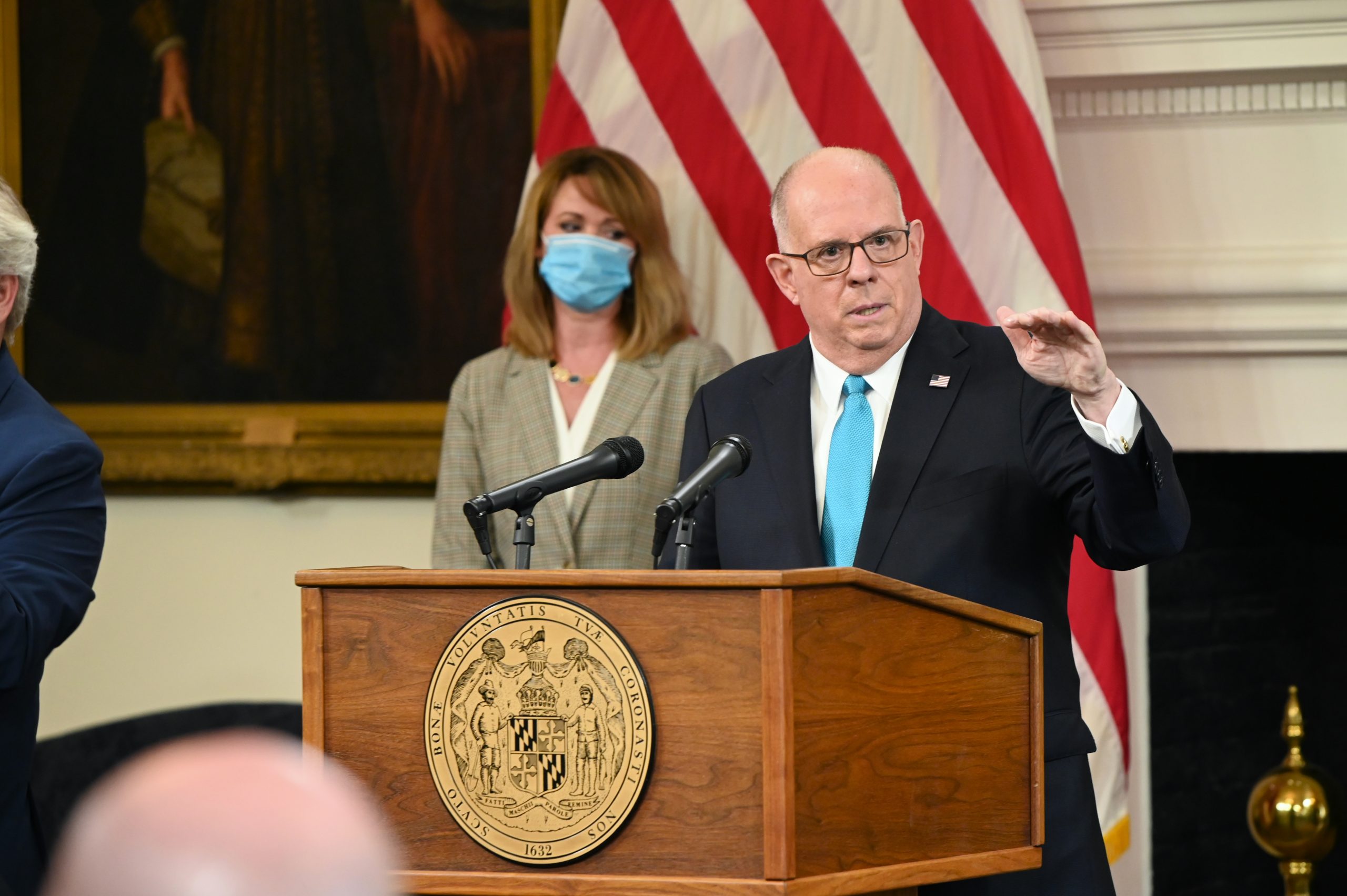Citing improved metrics in the fight against COVID-19, Gov. Larry Hogan, R, this week announced a sweeping change to the state’s capacity restrictions on many indoor and outdoor activities that begins Friday.
Hogan made the announcement during a press conference Tuesday, about a week after Rochelle Walensky, director of the Centers for Disease Control and Prevention, expressed concern over states relaxing restrictions too early.
Walensky made the comments during a White House press briefing on March 1, urging caution as variants of COVID-19 threatened to upend progress on slowing the pandemic.
In Maryland under Hogan’s order, starting Friday at 5 p.m. capacity limits on indoor and outdoor dining establishments will be removed.
Occupancy limits on retail establishments, houses of worship and indoor recreational activities will also be eased for the first time since the pandemic began in March 2020.
Large outdoor sporting facilities, including race tracks and stadiums, will welcome fans for the first time in nearly a year at half capacity.
“There can be no doubt that we are now closer to that light at the end of the tunnel and a return of some sense of normalcy to our lives” Hogan said during a press conference Tuesday.
Despite loosened restrictions, social distancing and other preventative measures such as the continued use of masks are still in effect; Hogan credited the use of masks with the state’s improving COVID-19 statistics.
Since Maryland entered phase 1C of vaccination eligibility on Jan. 25, the state has recorded significantly lower figures in both the 7-day average and daily positivity rates; positive cases are down by 45% and 32% respectively.
Decisions on whether to adopt the updated guidelines will remain with local and municipal governments, Hogan director of communications Mike Ricci confirmed Tuesday in a report published by Maryland Matters.
Ricci’s comments echoed those made by Hogan, who said at Tuesday’s news conference that he hoped all of Maryland’s 24 jurisdictions followed suit in reopening.
Baltimore Mayor Brandon M. Scott, D, released a statement on Monday saying the city would “continue to lean on the direction of healthcare professionals and local data” on recovery matters.
The statement went on to say that the mayor would review the order to determine the best path forward for the city.
With the first and second highest proportions of their populations affected by COVID-19, and vaccination rates in the single digits, Prince George’s and Montgomery counties are arguably the two jurisdictions hardest hit by COVID-19.
Neither county has signaled whether they intend to follow the order, or stay with their more restrictive paths.
The order could bring relief to the state’s tourism industry, which took significant losses as the COVID-19 pandemic affected hotel occupancy and temporarily shuttered popular attractions.
“It’s a good thing for Ocean City to allow the capacity back up…it’s a step in the right direction.” said Joseph Mitrecic, R, president of the Worcester County Board of County Commissioners.
Worcester County ranks second in proportion of population vaccinated in the state with 24.85% of the county inoculated, according to the state’s coronavirus dashboard.
Charles County Board of Commissioners President Reuben B. Collins II, D, said in a statement to Capital News Service that the county would adopt the state’s recommendations despite only 13% of the county being vaccinated at time of publication.
“The continued requirement to maintain social distancing and wear a face mask indoors provides the appropriate safety measures needed,” Collins II said in the statement.
Anne Arundel County announced Tuesday afternoon that they also would follow the governor’s order to reopen their businesses.
However, the county’s limitations on gatherings of 10 people indoors and 25 outdoors would remain in effect, County Executive Steuart Pittman, D, said in a statement.
Sen. Clarence Lam, D-Howard and Baltimore counties, is a member of the Senate Vaccine Oversight Workgroup and has been vocal about his frustration with the state Health Department’s handling of COVID-19; he worries about the speed at which the governor has decided to reopen.
“I’m concerned because I have not seen any benchmarks, or metrics that the administration has pointed to that we’ve met that indicates that it’s appropriate at this time to very quickly reopen or very quickly lift these restrictions,” Lam told Capital News Service.
Lam said, among other things, he would have liked to see more progress with the COVID-19 vaccine initiative before allowing businesses to loosen restrictions.
The only way of progressing beyond the pandemic is reaching herd immunity, which requires more widespread vaccination, Lam said; he also worries about what the state will do if it needs to impose more restrictions again after reopening.
“We have about 8,000 beds in the state and the whole point of bending the curve is to not have 9,000 cases of COVID at the hospital, then we’re going to end up with a situation that we saw back in April in New York City where there, the system just couldn’t handle overcrowding,” Lam said.
Sen. Adelaide Eckardt, R-Caroline, Dorchester, Talbot, and Wicomico, is also a member of the Senate Vaccine Oversight Workgroup; she supports the governor’s decision to loosen business capacity restrictions.
“I think it’s a good thing; we’re moving in the right direction…last week, we had additional doses of the Johnson & Johnson vaccine come out, and in the next two weeks we’re probably going to be getting more,” Eckardt told Capital News Service.
By Wednesday, 389,566 cases of COVID-19 have been confirmed in the state; the positivity rate stands at 3.61%. 7,820 people have died of COVID-19 in Maryland.
A combined 1,653,670 of first and second-dose vaccines have been administered.

